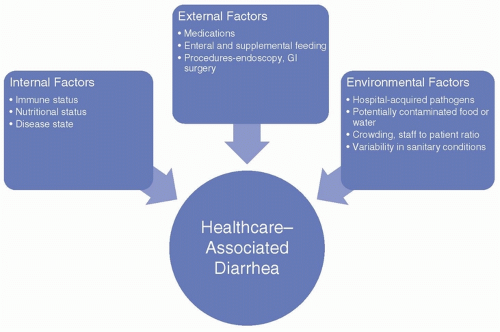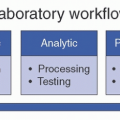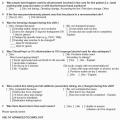NoV is the leading cause of AGE worldwide. Although identified in 1968 during an outbreak in Norwalk, Ohio, it was not until the 1990s with the advent of molecular diagnostics that the virus and burden of disease could be further characterized.
36,37 Since then, there has been an immense increase in knowledge regarding NoV’s epidemiology and transmission.
36 It is estimated in 2010 NoV accounted for 677 million cases of diarrhea globally, 213 515 deaths, and 18% of all AGE worldwide from a recent meta-analysis.
38,39 In the United States, Hall et al. concluded that NoV causes 570-800 deaths, 56 000-71 000 hospitalizations, and 400 000 emergency department evaluations annually based on the analysis of previous papers looking at the prevalence and incidence of NoV.
40,41Importantly, it is the predominant cause of outbreaks of gastroenteritis in adults and pediatrics in HIC.
42,43 In temperate climates, the outbreaks are seasonal and occur mainly in the winter months. Most outbreaks of NoV occur in LTCF or acute care hospitals rather than restaurants, daycares, and cruises in both adult and pediatric populations.
44,45,46 The incidence and prevalence of HA NoV have been described in various healthcare settings in HIC (Dutch, United States, and United Kingdom).
46,47,48 One Dutch study found that from 2002 to 2007 in a tertiary care hospital, of 197 patients who were diagnosed with NoV, over half (57%) were HA.
47 The most affected populations included the very young and the older adults.
47 In Avon, England, from 2002 to 2003, 51% of the outbreaks were attributed to NoV.
49 Globally, including community and HA NoV mortality is primarily in the young children and infants, in HA NoV the mortality is seen in infants but also predominantly in the older adults.
39,50,51 In countries that have introduced RV vaccination in children, NoV has surpassed RV as the leading cause of AGE and is a common HA cause of GE in children.
43,52 Immunocompromised patients are especially susceptible to HA NoV and can have more prolonged period of symptoms and shedding of the virus.
53There is a substantial economic burden, morbidity, and mortality associated with HA NoV outbreaks. It is estimated globally NoV causes $4.2 billion in direct health systems costs and $60.3 billion in societal costs, with 84%-99% of costs from productivity loss.
54 In England, HA gastroenteritis was estimated to cost $184 million dollars in 2002, of which NoV makes up a substantial cause of these cases.
48 Other studies have estimated an outbreak of NoV to cost anywhere from $40,675 to $657 644 when taking into account decreased staff, closure of units, testing, and cost of cleaning and replacing supplies.
55,56 Other studies have demonstrated that NoV outbreaks in nursing facilities have been associated with increased hospitalizations and mortality.
57NoV is a single-stranded RNA virus, part of the Caliciviridae family of viruses. There are seven genogroups of NoV, and GI, GII, and GIV can infect humans, with GI and GII being the most common.
42,45 There are 9 genotypes of GI, 22 of GII, and 2 genotypes of GIV. Certain genotypes have been present in particular outbreak situations. For example, despite the diversity of genotypes, GII.
4 is the most common worldwide and is the most common cause of HA outbreaks.
36,45 Non-GII.
4 genotypes (GI.3, GI.6, GI.7, GII.3, and GII.6) have been linked more commonly to foodborne outbreaks.
45,58 Every 2-3 years, there have been new pandemics of GII.
4 NoV (
Table 18-4).
36,42,59 The adaptability of the GII.
4 NoV is driven, in part, from antigenic drift or mutations in the capsid P2 domain.
59,60 These variants are formed due to pressure of the current herd immunity present in the population and allow the virus to circumvent that protective mechanism.
36,59 Another way NoV evades immunity is forming variants by RNA recombination, leading to antigenic shift.
42,59 One of the most common recombinant NoV is GII. Pb/GII.3, which has persisted, mainly in children.
59 NoV is transmitted either by person-to-person contact, foodborne, waterborne, and even airborne routes, with the first two being the most common.
37,61 Although there are genogroups that infect other animals, there is no reported zoonotic infection.
36 What makes NoV an ideal pathogen for nosocomial transmission includes its ability to cause infection with few viral particles (18-1000), the large amount of viral shedding from diarrhea and vomitus, and short period of immunity to previous strains.
37,44 This is exacerbated in healthcare settings as hospitalized patients, especially immunocompromised persons, can have chronic diarrhea
and prolonged shedding and the virus may live on environmental areas.
44,45 NoV can also contaminate the environments and has been isolated from hospital surfaces including bathrooms and high-touch surfaces. These features lead to high attack rates, and an outbreak can spread quickly throughout a unit or hospital. Risk factors for an outbreak include an index patient in a multioccupancy room (with higher number of people in the room making it more likely to start an outbreak), close proximity to infected patient, vomiting, having multiple comorbidities, and onset of symptoms occurring after admission to the ward.
62 Infection prevention and control measures unique to NoV will be discussed in the Management section.







